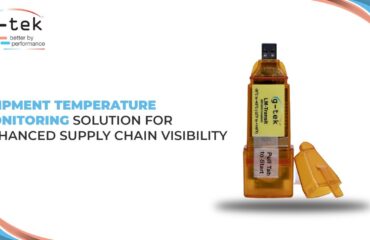
Stainless steel exporters face a silent threat during shipping: corrosion. Despite best efforts in packaging and planning, many shipments still arrive damaged. The real problem? Unseen environmental conditions like humidity and temperature that silently attack your goods during transit.
It’s Frustrating When You’re Left Guessing
Imagine this: you did everything right — quality product, airtight wrapping, timely dispatch — but your customer still complains of corrosion. You wonder:
• Was the steel exposed for too long at a humid port?
• Did the vessel pass through high-risk climate zones?
• Did storage go wrong en route?
Without data, it’s speculation. And speculation doesn’t solve problems — or protect your business.
The Turning Point: Using a Data Logger in Shipping
This is where data loggers change the game. These compact devices record temperature and relative humidity (RH) during transit. You get time stamped, objective data that tells you exactly what your shipment experienced.
Here’s how it transforms your export operations:
5 Practical Ways Data Loggers Help Stainless Steel Exporters During Shipping
1. Identify Corrosion-Prone Conditions During Transit
- Many high-risk countries like Vietnam, Brazil, and South Africa face RH above 80% and long transit times (30–55 days). These are prime conditions for corrosion.
- A data logger reveals exactly when and for how long your cargo was exposed to such conditions — helping you recognize patterns and act before damage repeats.
2. Pinpoint the Root Cause of Damage
- Say a customer in Argentina reports rust on delivery. With data logger readings, you can cross-check the timeline.
- Was the shipment delayed at a humid port?
- Did RH peak during a specific segment of the journey?
- Instead of vague assumptions, you now have precise timestamps and environmental data that guide your internal investigation or response to clients.
3. Improve Packaging and Storage Practices
- When multiple shipments show rising humidity at certain legs of the route, it signals a need to upgrade your packaging, insulation, or desiccant use.
- Likewise, if exposure always happens at port storage, it may be time to rethink port handling procedures or use climate-controlled holding areas.
4. Provide Evidence for Claims and Accountability
- Whether it’s a dispute with a freight company, logistics partner, or insurance provider — you need facts, not guesswork.
- Data loggers provide a time-stamped trail showing when environmental thresholds were breached. This can clarify responsibility and support insurance claims or contractual disputes.
5. Optimize Future Shipments
- Over time, logger data becomes a powerful strategy tool.
- You can adjust your shipping routes, change transit timelines, or avoid specific ports during humid seasons (e.g., Brazil in monsoons).
- You’re not reacting anymore — you’re proactively designing smarter logistics.
Take Control of What You Can’t See
Even the best stainless steel — like 304 and 316 — can suffer if exposed to moisture over time.
A data logger won’t stop corrosion — but it gives you the data to prevent it next time. It helps you diagnose problems, assign accountability, and protect your brand in front of customers and stakeholders.
Make better shipping decisions backed by data.
Schedule your 1-on-1 session today to find out how our data logger fits your export operations.






